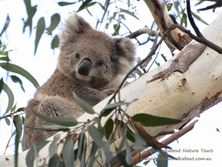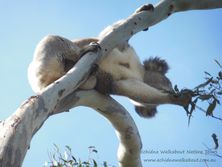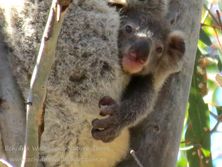
Shoppers Feedback:
Jan 17, 2017
Hello Ros,
I have now paid the invoice, but I would like to write to you just to say a big THANK YOU for getting me the Penguin!
The ChatterMate Penguin became a nice memory for me when I was in New Zealand, and I am so greatful to you for arranging so that I could have it! :-)
Thank you so much!!!!!!!!!!!
Regards,
Malin
Hi Ros,
Many thanks for your very kind email. I really appreciate your prompt reply!
I appreciate your advice regarding the decorations and customs. These are a gift for my daughter’s exchange student family so when she returns home on the weekend I will show her and see if she loves them as much as I do!
Thanks so very much again - I am truly grateful for your kind assistance.
Kind Regards
Bernadette
Ros,
Thanks again for the great customer service. It's a refreshing change!
Best regards,
Trevor
Hey Roz,
Thank you for your emails. Just loved my first order. The cute little Aussie bush critters are going to be used for an office Christmas decoration. My colleagues also liked them and talked about making an order to your site. I'll send you a photo when completed.
I'll be ordering more to send to my daughter's host family in America.
Fabulous service from you.
Kind regards,
Michelle
Thankyou. Order arrived today. One very happy grandson with his new beastly binoculars.
Regards,
Irene
- Home
- Wild Wonders
- Shop
- Aromas of Australia
- Australian Made
- Books
- Book Marks
- Christmas Decoration Sale
- Christmas Decorations
- Clocks
- Drink Holders
- Garden & Outdoor
- Gift Wrapping & Cards
- Home & Giftware
- Jewellery
- Keyrings
- New Products
- Pencils & Pen Holders
- Photo Frames
- Plush Toys
- Plush with Sound
- Sheepskin Rugs
- Stationery
- Stone Carvings
- Toys & Games
- Travel Goods
- Wedding
- Wild Figurines
- Wildlife Safety Products
- Wind Chimes
- Wine Charms
- View All Products
- Wildlife
- Australiana
- Explore
- Contact Us

Quick Facts
| Length: | 60 - 85 centimetres |
| Height: | - |
| Weight: | Southern Koalas - Males 12kg - Females 8 - 9 kg Northern Koalas - Males 6 - 8 kg - Females 5 - 6 |
| Colour: | Southern populations: Grey-brown on head, back and legs; white chest and belly. White fur tufts in ears, shiny large black nose. |
| Habitat: | Eucalyptus-dominated woodlands and forests |
| Food: | Many species of gum tree – there are over 100 species they are known to eat |
| Predators: | Wild Dog, Habitat Destruction, Climate Change, Vehicle Collision |
| Status: | Secure in SA and VIC. Not Present in NT, TAS and WA. Vulnerable in NSW and QLD |
Koalas are easily identifiable – there is no animal quite like them! Shaped rather like a teddy bear, they have a round face with big fluffy ears, a large black shiny nose and a stout furry body. They have no tail, but live in trees and move around confidently, but slowly. They have very sharp claws for climbing tree trunks, and strong arms that can hold their whole body weight easily.
They are a large animal for a tree-dwelling lifestyle. Unlike monkeys and possums they do not jump, run and swing around in the trees. Koalas are more ponderous and are usually slow-moving, though they can run and bound quickly when needed, and can jump about 2metres from branch to branch.
Wild koalas usually change trees every day. To do this, most of them climb down, walk along the ground to the tree they want, and climb up it. This often happens at night, but can be seen during the day as well. If you find a koala walking on the ground, don’t approach it – they get frightened, and may run into a dangerous situation. Stay at least 10metres away, stop traffic if they are on a road, and let them be. They will usually go for a tree and climb up it.
Though known as a sleepy animal, koalas are surprisingly alert at all times. They do rest for around 18 hours a day, but they are not fast asleep – they are listening, smelling and sensing the world around them. Even high in a tree a wild koala will know that you are around, and will become stressed if you get too close or touch the tree. Stay back – 10 metres is the closest you should ever get to a wild koala.
Koalas naturally live in the eucalyptus woodlands of the Great Dividing Range and along inland rivers, from northern Queensland along the east and south coasts of NSW and Victoria into south-eastern South Australia. They population in south-eastern SA died out in the early 1900’s, but they have been re-introduced to that state and are now more widely distributed there than they were naturally.
Eucalyptus-dominated woodlands and forests.
Koalas feed on the leaves of eucalyptus trees. They climb to the small branches, usually near the top of the tree and eat mostly the mature leaves. Leaves are grabbed with the hands and pulled toward the mouth – often you will see a koala holding a branch near their mouth whilst chewing contemplatively. Feeding sessions usually last for 20 minutes to one hour, with short breaks for resting. Most feeding occurs in the cooler hours of early morning, dusk and at night, but daytime feeding is also relatively common throughout the year. Daytime feeding may be instigated by recent rainfall – wet leaves seem to be attractive to koalas, especially during dry spells.
Koalas are known to be very selective about the tree species and individual leaves they eat. Some trees will be completely ignored by koalas, while others of the same species are popular. Much research has been done on how they choose which leaves to eat – levels of nutrient, poisons (tannins) and water are all taken into account.
In breeding season (October to March in south, June to April in north) male koalas start calling. Their song is a deep, snoring repeated bellow that travels long distances through the forest, and advertises their availability to females. Females then travel towards their preferred mate – they do not mate for life, and may choose a different mate each season. Sometimes she will stay with that male for a few days. If a male approaches a female that hasn’t chosen him, he can try to overpower her, but females have some defence against this and can fight back strongly, often successfully. Whether the female chooses her mate or not, mating often involves a lot of wrestling, yelling and rough-house, but don’t worry! It's part of the system – female koalas won’t release an egg unless they actually mate.
Males become quite scarred by these encounters, and by fighting with other males, though serious fights between adult males are rare.
You can often tell when a female koala is ready to mate. She will do some strange things – jerking, hiccupping, urinating frequently and calling.
If mating is successful the baby koala (called a joey) is born after about 35 days. The tiny creature climbs into the pouch and attaches to one of two nipples, and stays there safely hidden for six months.
Koala joeys first emerge from the pouch at around six months, and will spend a bit of time clinging to their mother’s belly, suckling regularly. At this time they are hard to see – you might just see a tiny arm or hand poking out. After a month or two they will start riding on their mother’s back – this is when they are usually first seen.
Early in their outside life they feed on ‘pap’: a special substance produced by the mother from her caecum. It’s a bit like a probiotic. It gives the baby the digestive flora needed to feed on eucalyptus. Without it the baby will die.
Over the next few months the joey will start nibbling eucalyptus leaves, and will take short journeys around the tree on its own. Mother is always close, and the two will often be seen cuddling.
Young koalas stay with their mother until around one year old. They are weaned at about this time, and mother may have another baby on the way. Male young leave their mother’s home range and can travel large distances before they find a suitable home for themselves. Female young may stay quite near to their mother their whole lives.
Last Updated: Wednesday 3rd December, 2014
Janine Duffy, Echidna Walkabout Nature Tours & Wildlife Research www.echidnawalkabout.com.au/
BUSH e-TELEGRAPH
Signup for our monthly newsletter the "e-Telegraph"
Quick Links
Home | The Beginning | About The Land Down Under | Wild Wonders | Advertise on Wild Wonders | Christmas Decoration Sale | Christmas Tree Decorations | Drink Holders | Plush with Sound | Stone Carvings | Wildlife Wine Charms | Freebies | Australian Wildlife | Help Our Wildlife | Australiana | Photo of the Month | Explore The Land Down Under | Contact Us | Legal Notices



